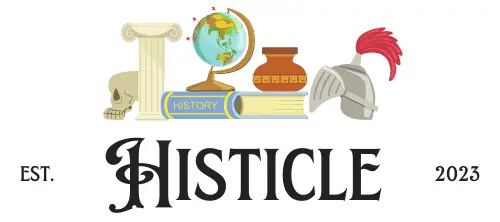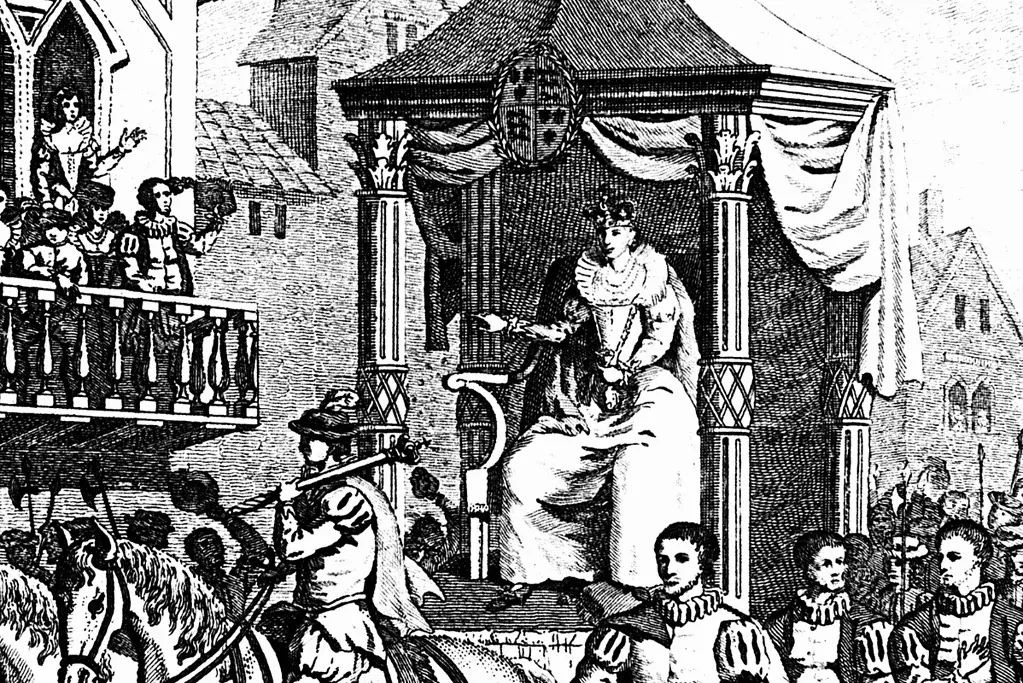
Today, we’re exploring some truly fascinating facts about Queen Elizabeth I that might just make you see this iconic monarch in a whole new light.
From her remarkable fluency in multiple languages to her strategic use of fashion as a tool of power, Elizabeth’s life was filled with moments that defined an era and changed the course of history.
Whether you’re a history buff, a curious learner, or just looking for some interesting tidbits to share with friends, these insights into the Virgin Queen’s reign are sure to capture your imagination.
So, buckle up and let’s journey back to the Elizabethan era, where we’ll uncover the lesser-known sides of one of England’s most famous and formidable rulers.
10 Intriguing Facts About Elizabeth I Explained
Kicking off our list of 10 interesting facts about Queen Elizabeth I, her remarkable talent as a polyglot shines as the first on our list.
This skill was not just impressive, but pivotal in her reign.
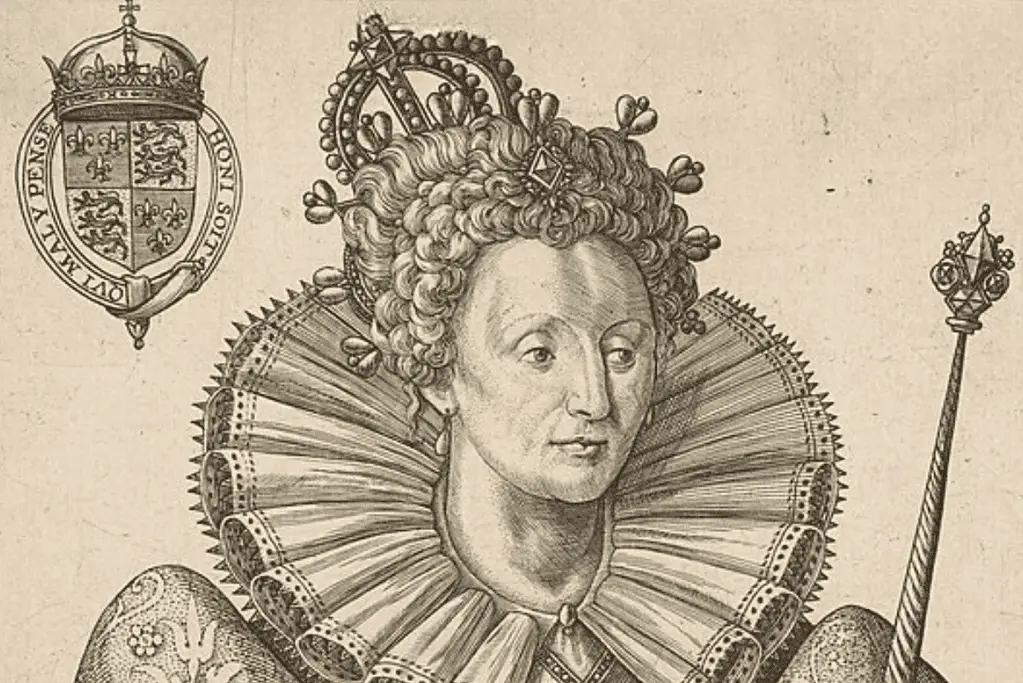
1. She was a polyglot
Diving into the intellectual prowess of Queen Elizabeth I, her ability as a polyglot is truly remarkable.
Fluent in several languages, Elizabeth could speak French, Italian, Latin, and Greek. This skill was not just for show; it played a crucial role in her diplomatic strategies and international relations.
Being a polyglot allowed her to communicate directly with foreign emissaries, showcasing her education and intelligence.
Among the interesting facts about Queen Elizabeth I, her linguistic abilities highlight her as a well-educated and versatile leader.
This aspect of her character broke barriers, making her one of the most respected and influential monarchs of her time.
Elizabeth’s command over multiple languages exemplifies her commitment to understanding and engaging with the wider world.
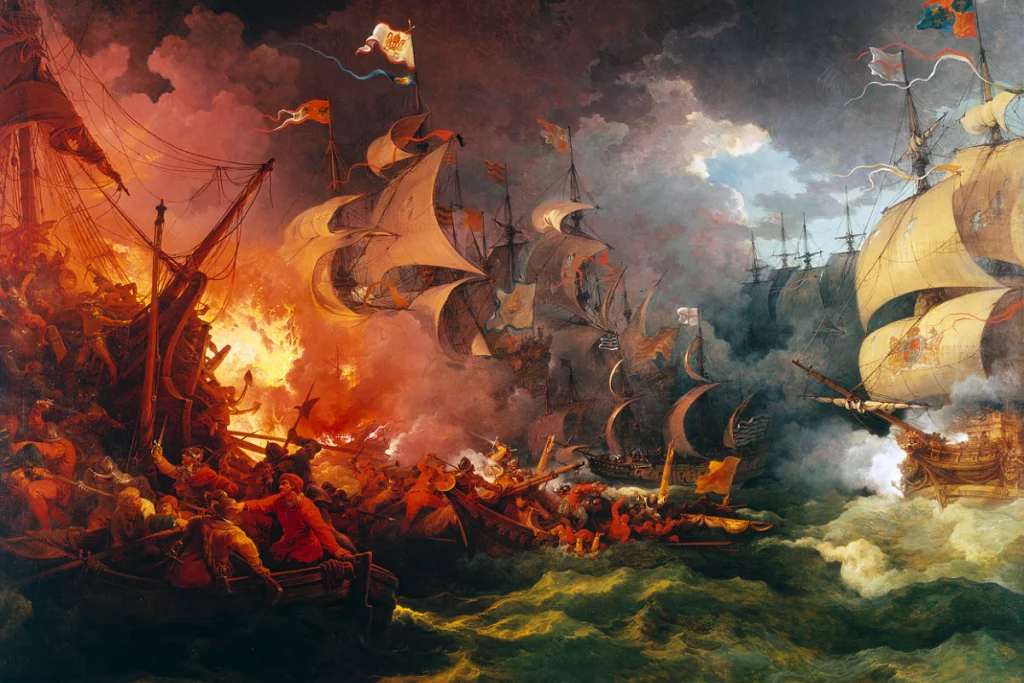
2. Her nickname was “Gloriana”
Moving on to another captivating aspect of her legacy, Queen Elizabeth I’s nickname, “Gloriana,” has its own fascinating story.
This illustrious title was inspired by her leadership during England’s Golden Age.
Coined after the defeat of the Spanish Armada in 1588, “Gloriana” symbolized her radiant influence and the prosperity of her reign.
The name was popularized by Edmund Spenser’s poem, “The Faerie Queene,” which celebrated her as a goddess-like figure.
Among the interesting facts about Queen Elizabeth I, “Gloriana” reflects not just her political success, but also the cultural and artistic flourishing under her rule.
This nickname captures the essence of Elizabeth’s era as a period of unparalleled achievement and glory.
Her legacy as “Gloriana” continues to evoke the brilliance of her leadership and the enduring impact of her reign.
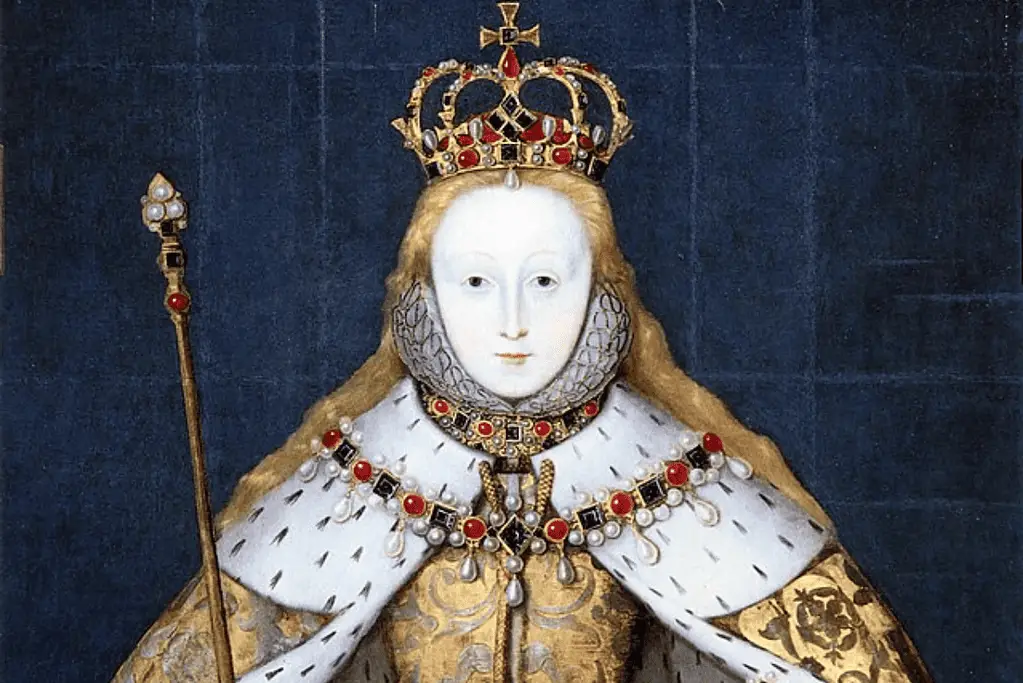
3. Elizabeth never married
Continuing our exploration of Elizabeth’s life, her choice to remain unmarried is a defining feature of her reign.
Known as the “Virgin Queen,” Elizabeth’s marital status was a topic of international speculation. She skillfully used marriage negotiations as a diplomatic tool, without ever committing to a union.
This strategic decision allowed her to maintain control over her kingdom and her independence.
Among the interesting facts about Queen Elizabeth I, her singleness helped shape the political landscape of Europe.
It also cemented her image as a powerful, autonomous ruler in a male-dominated society.
Elizabeth’s choice to remain unmarried wasn’t just personal; it was a masterstroke of political strategy, showcasing her as a monarch who put her country above everything else.
4. She was a skilled musician
Moving on to another fascinating aspect of her life, Queen Elizabeth I’s musical talent truly sets her apart.
Not only did she rule with wisdom, but she also shone as a skilled musician. Mastering instruments like the lute and the virginals, her proficiency was remarkable.
This part of her education wasn’t just for show; it highlighted her cultured and well-rounded personality.
Through music, Elizabeth found a unique way to connect with those around her, showcasing her depth beyond politics.
This slice of her life adds a rich layer to the interesting facts about Queen Elizabeth I, illustrating the diverse talents of this iconic queen.
5. Elizabeth survived smallpox
Among the interesting facts about Queen Elizabeth I, her battle with smallpox in 1562 stands out.
This was a time when smallpox was deadly, with no cure in sight. Elizabeth caught the disease, causing panic across the kingdom.
Miraculously, she made a full recovery, a feat that amazed her subjects. This incident not only showcased her physical strength but also her determination to lead.
It’s said that her survival boosted her image as a strong and chosen leader. Elizabeth’s triumph over smallpox added a legendary chapter to her storied reign.
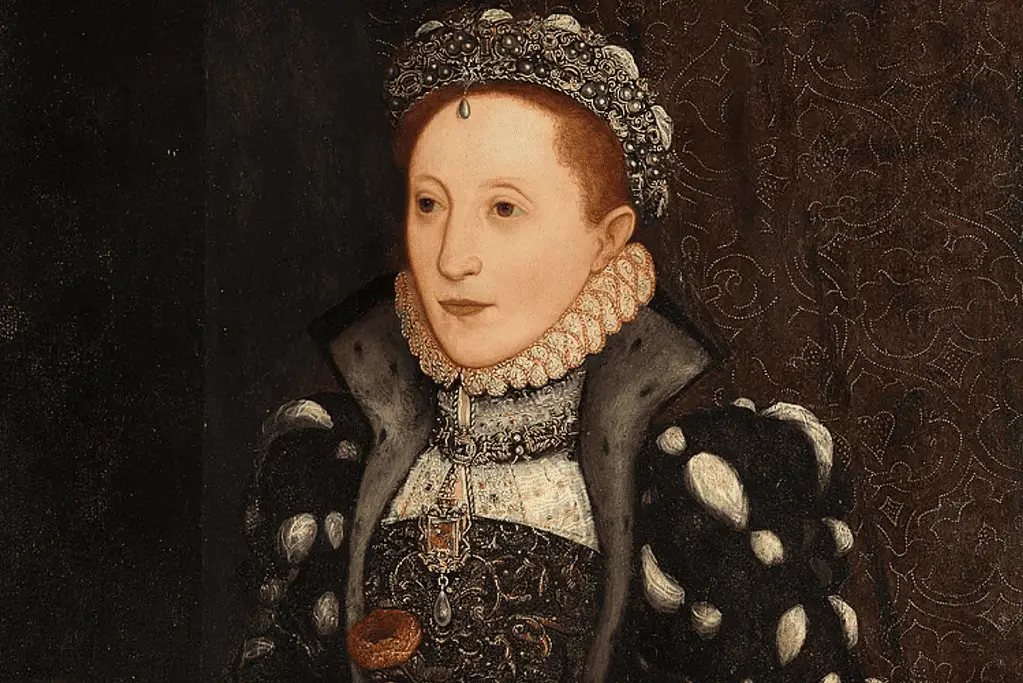
6. She loved fashion
Following on, another intriguing detail about Queen Elizabeth I is her love for fashion.
She wasn’t just a leader and musician; her sense of style made waves across Europe. Elizabeth used fashion as a tool of diplomacy and power, often wearing elaborate dresses to impress and intimidate.
Her wardrobe was filled with luxurious fabrics, vibrant colors, and intricate designs. This love for fashion also helped shape the public image she wanted to project: a queen of elegance and authority.
Among the interesting facts about Queen Elizabeth I, her impact on fashion reminds us of her strategic mind and how she skillfully used her image to enhance her reign.
Elizabeth’s flair for fashion still influences the world today, marking her as a timeless style icon.
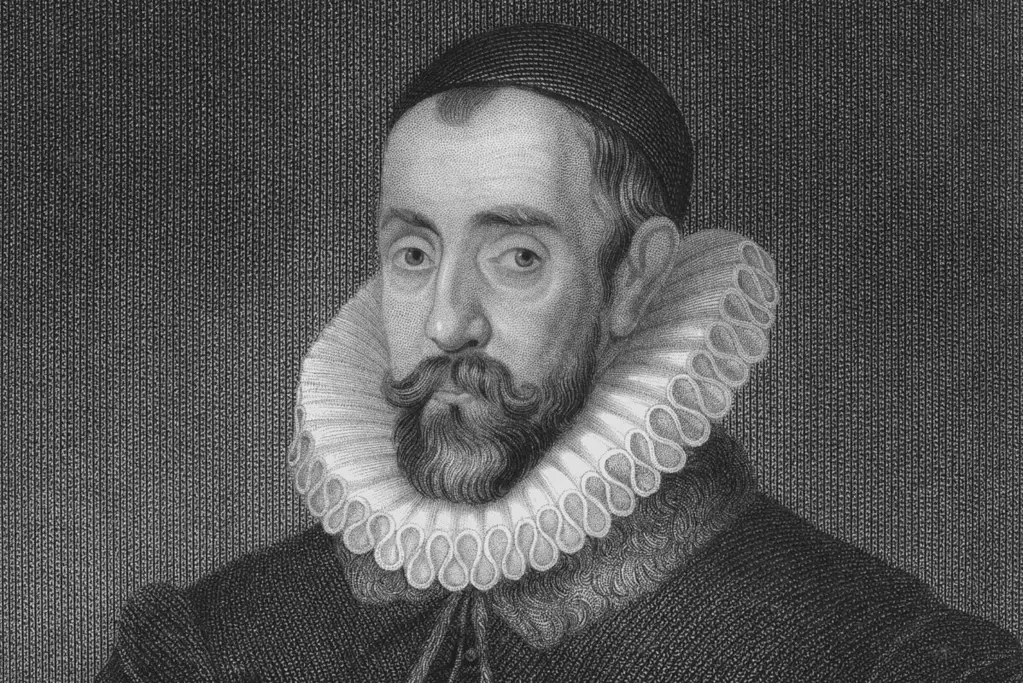
7. Innovative espionage
Shifting gears to a more clandestine aspect of her reign, Queen Elizabeth I’s creation of a sophisticated spy network is a testament to her strategic genius.
She didn’t just rely on her public image and political savvy; she also understood the importance of intelligence in protecting England.
Under the guidance of her trusted advisor, Sir Francis Walsingham, this network was instrumental in thwarting plots against her life and the state.
It included spies and informants across Europe, showcasing Elizabeth’s far-reaching influence and the lengths she would go to ensure her kingdom’s safety.
This network is among the interesting facts about Queen Elizabeth I, highlighting her as a leader who was ahead of her time in understanding the power of information.
Her legacy in espionage set a precedent that would shape intelligence operations for centuries to come.
Elizabeth’s spy network was not just about protection; it was a bold statement of her resolve to maintain control and stability.
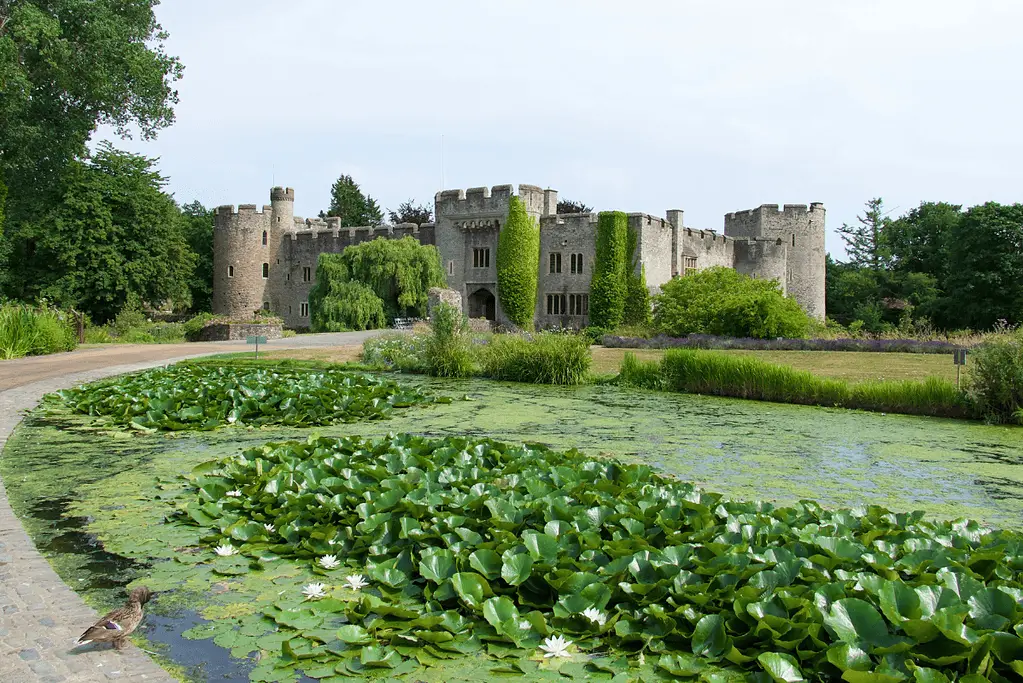
8. She faced imprisonment
Following our exploration of Elizabeth’s linguistic prowess, we delve into a darker period of her life. Elizabeth I’s imprisonment due to her supposed connection to Wyatt’s Rebellion is a gripping tale.
In 1554, amidst fears of Protestant insurrection, Elizabeth was suspected of involvement and taken to the Tower of London.
This was a time of immense danger; being imprisoned in the Tower often preceded execution. However, after several months, she was released due to lack of evidence.
This harrowing experience is one of the interesting facts about Queen Elizabeth I, highlighting her resilience in the face of adversity.
Her time in the Tower marked a turning point, shaping her into the cautious and formidable ruler she would become.

9. A patron of the arts
Transitioning to a lighter yet impactful facet of her reign, Queen Elizabeth I’s support for the arts truly stands out.
She wasn’t just a monarch; she was a patron of playwrights, poets, and musicians.
Her reign is often called the Elizabethan Era, a golden age for English culture.
Shakespeare and many other artists flourished with her encouragement, contributing classics that are still celebrated today.
This support wasn’t just about enjoyment; it was a strategic move to strengthen her rule and promote English nationalism.
Among the interesting facts about Queen Elizabeth I, her role as a patron of the arts highlights her vision for a culturally rich England.
Her legacy in this area reminds us of the lasting impact a leader can have on their nation’s cultural landscape.
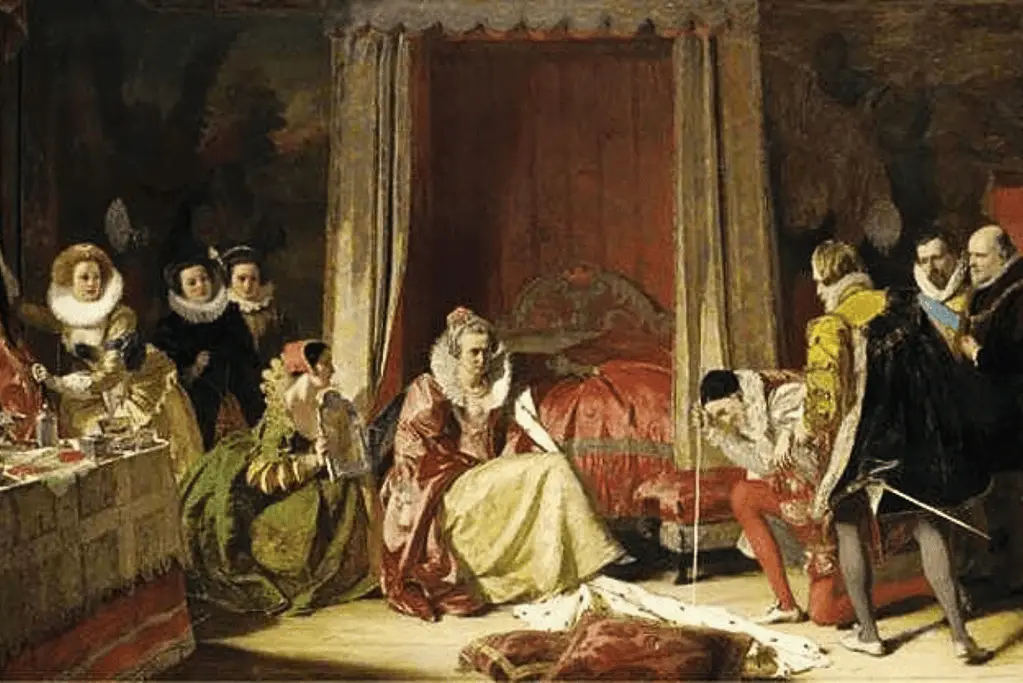
10. Elizabeth’s Dental Health Woes
Transitioning from her profound support of the arts, another lesser-known aspect of Elizabeth’s life was her struggle with dental health.
Queen Elizabeth I’s love for sweets, particularly sugar, had a notorious impact on her teeth, leading to severe decay.
This indulgence in sugary treats, a rarity and symbol of wealth at the time, resulted in significant dental problems.
The dental care available during the 16th century was primitive, providing little relief for the queen’s discomfort. It’s said that her dental issues were so acute they affected her speech.
This facet of Elizabeth’s life is one of the interesting facts about Queen Elizabeth I, revealing the personal challenges she faced behind her regal facade.
It serves as a reminder of the era’s medical limitations, even for those of the highest status.

Brief Biography: Facts About Queen Elizabeth I
Full Name:
Elizabeth Tudor, known as Queen Elizabeth I
Date of Birth:
September 7, 1533
Place of Birth:
Greenwich Palace, London, England
Date of Death:
March 24, 1603
Profession:
Queen of England and Ireland
Major Achievements:
- Successfully established the Protestant Church of England, solidifying its structure and doctrine.
- Oversaw the Elizabethan Era, a golden age of English culture, marked by the flourishing of English literature and the successful defeat of the Spanish Armada in 1588.
Legacy:
Queen Elizabeth I left a profound impact on English history and the world, known for her strong and effective leadership, her promotion of the arts and exploration, and her skill in navigating the complexities of international politics and religious division.
Her reign contributed to the rise of England as a major world power and laid the groundwork for its future imperial endeavors.
Elizabeth’s legacy is also marked by the cultural renaissance that occurred during her time, making her one of the most influential and admired monarchs in history.

Wrap-up: Facts About Queen Elizabeth I
As we wrap up this journey through the fascinating life of Queen Elizabeth I, it’s clear that her legacy is as multifaceted as the queen herself.
From her linguistic prowess and her strategic decisions to her contributions to culture and the arts, Elizabeth’s reign was nothing short of remarkable.
Her story is not just a tale of power and politics; it’s a testament to the resilience, intelligence, and indomitable spirit of one of history’s most influential women.
Elizabeth’s life reminds us that true leadership often requires creativity, courage, and an unwavering commitment to one’s principles.
Her achievements in diplomacy, espionage, and the arts, alongside her personal trials and triumphs, continue to inspire and captivate us centuries later.
Whether it was through her fashion statements, her support for the arts, or her innovative approaches to governance, Elizabeth I shaped an era that still resonates in modern culture.
As we consider the legacy of the “Virgin Queen,” let’s remember the complexity of her character and the depth of her impact.
Elizabeth I was not just a ruler; she was a visionary who navigated her country through challenges with grace and acumen.
Her story encourages us to explore our own potentials, embrace our individuality, and, perhaps, leave our own mark on the world.
Thank you for joining us on this exploration of Queen Elizabeth I’s life. Her reign may have ended centuries ago, but the lessons we can learn from her experiences are timeless.
Check out our list resources providing complete lists of all Kings and Queens of England and Great Britain and British Prime Ministers for more information on those who have led the country and empire throughout the ages!

FAQs: Facts About Queen Elizabeth I
The famous mother of Queen Elizabeth I was Anne Boleyn.
Anne Boleyn was the second wife of King Henry VIII and a key figure in the English Reformation.
Her marriage to Henry VIII was controversial and led to the establishment of the Church of England.
Unfortunately, Anne’s failure to produce a male heir and accusations of infidelity and treason led to her execution in 1536.
Elizabeth was just two years old at the time of her mother’s death.
For more content on other famous members of the Tudor dynasty, check out my posts below:
– The 6 Wives of Henry VIII and Their Fates
– Bluff King Hal: 10 Intriguing Facts About Henry VIII of England
After Anne Boleyn, the mother of Elizabeth I, was executed in 1536, Elizabeth’s life changed drastically.
She was declared illegitimate following her mother’s death and lost her position as a princess.
This status significantly affected her place in the succession and her upbringing.
Despite these challenges, Elizabeth received a comprehensive education under the guidance of esteemed tutors, which prepared her for her future role.
King Henry VIII, Elizabeth’s father, married Jane Seymour shortly after Anne’s execution, further solidifying Elizabeth’s diminished status at court.
However, Elizabeth’s fortunes improved when her half-brother Edward VI ascended to the throne in 1547, followed by her half-sister Mary I in 1553.
Despite periods of political tension and imprisonment, particularly during Mary I’s reign due to religious differences, Elizabeth ultimately ascended to the throne in 1558 after Mary’s death, marking the beginning of her storied reign as Queen of England.
The Elizabethan era, named after Queen Elizabeth I, who reigned from 1558 to 1603, is celebrated for its significant contributions to English culture, exploration, and the arts.
Here are some of its most notable achievements:
Cultural Flourishing: The period is renowned for the flourishing of English drama and literature, with William Shakespeare, Christopher Marlowe, and Ben Jonson leading the way.
Their works, encompassing tragedy, comedy, and history, remain foundational to English literature and theater.
The Elizabethan Settlement: Elizabeth I established the Protestant Church of England, navigating a middle path between the Catholicism of her sister Mary I’s reign and the Protestant reforms initiated by her father Henry VIII.
This settlement laid the groundwork for religious peace and the Church of England’s structure.
Exploration and Expansion: The era saw significant maritime exploration, led by figures like Sir Francis Drake, who circumnavigated the globe, and Sir Walter Raleigh, who established colonies in the New World.
These expeditions contributed to England’s later dominance in global trade and colonization.
The Defeat of the Spanish Armada: In 1588, England achieved a significant military victory against Spain’s Armada, marking England’s rise as a major naval power.
This victory protected England from invasion and bolstered its standing in Europe.
Advancements in Science and Education: The period witnessed growth in scientific thought and education, with figures like John Dee contributing to mathematics, astronomy, and navigation.
The founding of grammar schools expanded education beyond the elite, laying the foundation for broader literacy and learning.
These achievements reflect the Elizabethan era’s role in shaping modern Britain, marking a period of artistic brilliance, religious reform, and global expansion that defined England’s national identity and legacy.
References: Facts About Queen Elizabeth I
“18 March – Elizabeth I Is Arrested – the Tudor Society.” Www.tudorsociety.com, 18 Mar. 2020, www.tudorsociety.com/18-march-elizabeth-i-is-arrested/#google_vignette. Accessed 1 Mar. 2024.
Berry, Ciara . “Elizabeth I (R.1558-1603).” The Royal Family, 3 Aug. 2018, www.royal.uk/elizabeth-i.
Budiansky, Stephen. “Sir Francis Walsingham | English Statesman | Britannica.” Encyclopædia Britannica, 2019, www.britannica.com/biography/Francis-Walsingham.
Cartwright, Mark. “Wyatt Rebellion.” World History Encyclopedia, 8 May 2020, www.worldhistory.org/Wyatt_Rebellion/.
“Elizabeth I.” Historic Royal Palaces, www.hrp.org.uk/hampton-court-palace/history-and-stories/elizabeth-i/.
“Elizabeth I: The Most Elusive Bride in History.” History.hanover.edu, history.hanover.edu/hhr/94/hhr94_2.html.
“Elizabeth I’s near Fatal Illness of 1562.” University of Plymouth, www.plymouth.ac.uk/courses/undergraduate/ba-history-2-2/elizabeth-is-near-fatal-illness-of-1562.
Historic Royal Palaces. “Anne Boleyn.” Historic Royal Palaces, Historic Royal Palaces, 2017, www.hrp.org.uk/tower-of-london/history-and-stories/anne-boleyn/.
“Historical Notes: Why Did Elizabeth I Never Marry?” The Independent, 8 June 1998, www.independent.co.uk/arts-entertainment/historical-notes-why-did-elizabeth-i-never-marry-1163767.html.
I, Elizabeth. Elizabeth I. University of Chicago Press, 15 Sept. 2009.
Knighton, Andrew. “The Ruthless 16th-Century Spy Network That Kept Queen Elizabeth Safe.” HISTORY, 5 Nov. 2019, www.history.com/news/queen-elizabeth-spy-network-england.
Larson, Rebecca. “Queen Elizabeth’s Rotten Teeth.” Tudors Dynasty, 13 Dec. 2017, tudorsdynasty.com/queen-elizabeths-rotten-teeth/.
“Life of Anne Boleyn.” Hever Castle, 2014, www.hevercastle.co.uk/visit/hever-castle/timelines/anne-boleyn-timeline/.
“Medicine, Magic and Music: Elizabeth I.” All Things Tudor, 6 Apr. 2021, allthingstudor.com/medicine-magic-and-music-elizabeth-i/.
Morrill, John S, and Stephen J Greenblatt. “Elizabeth I | Biography, Facts, Mother, & Death.” Encyclopedia Britannica, 2 Nov. 2018, www.britannica.com/biography/Elizabeth-I.
“Queen Elizabeth I as a Patron of the Arts.” Prezi.com, prezi.com/uvi4pvs8jpu7/queen-elizabeth-i-as-a-patron-of-the-arts/.
Royal Museums Greenwich. “Elizabeth I: Fashion and Beauty.” Www.rmg.co.uk, www.rmg.co.uk/stories/topics/elizabeth-i-fashion-beauty.
—. “Queen Elizabeth I Facts and Myths.” Www.rmg.co.uk, www.rmg.co.uk/stories/topics/queen-elizabeth-i-facts-myths.
The Editors of Encyclopaedia Britannica. “Elizabeth I’s Achievements.” Encyclopedia Britannica, 21 July 2020, www.britannica.com/summary/Elizabeth-Is-Achievements.
“The Project Gutenberg EBook of Spenser’s the Faerie Queene, Book I, by Edmund Spenser, et Al.” Gutenberg.org, 2019, www.gutenberg.org/files/15272/15272-h/15272-h.htm.
Voorhies, James. “Elizabethan England.” Metmuseum.org, 2019, www.metmuseum.org/toah/hd/liza/hd_liza.htm.
